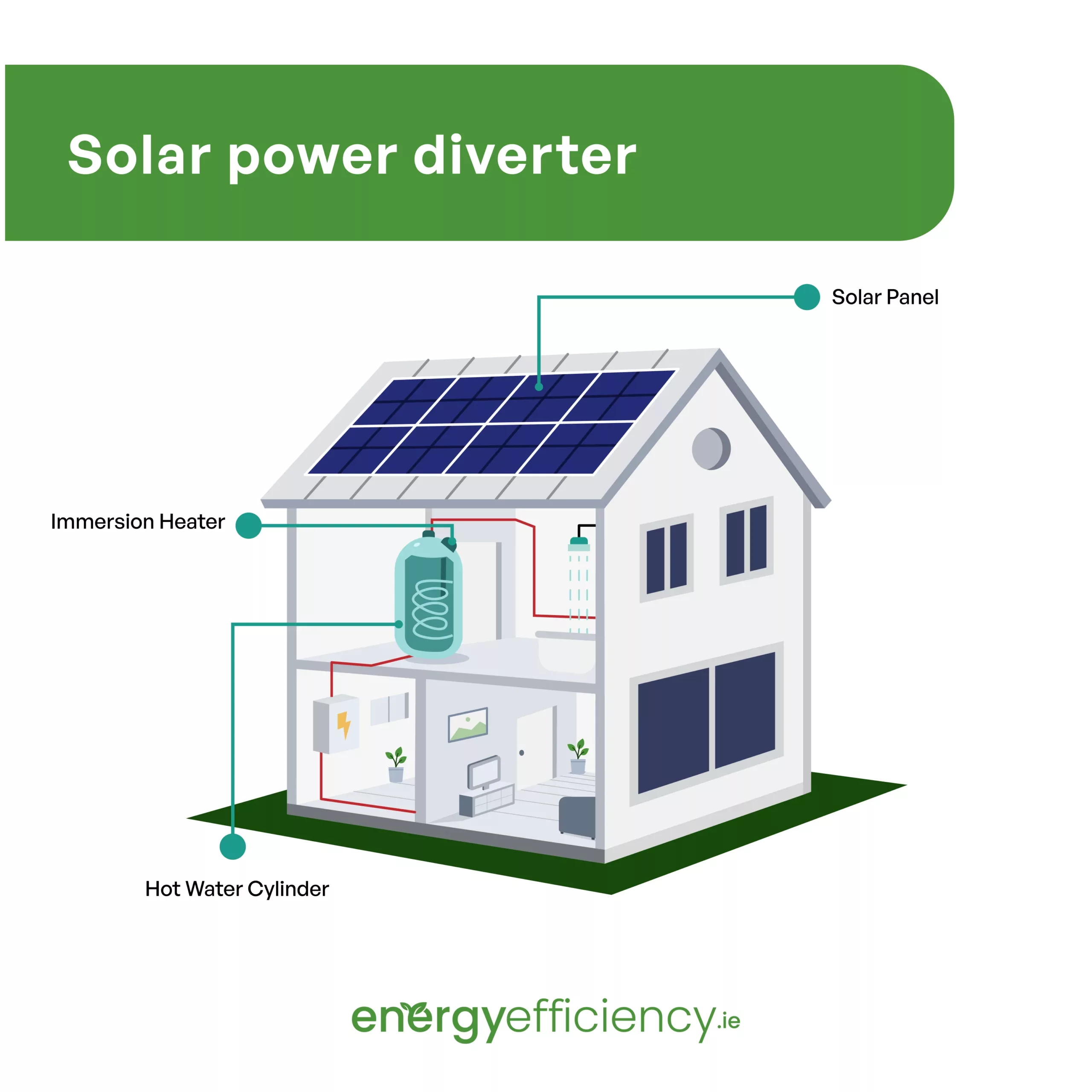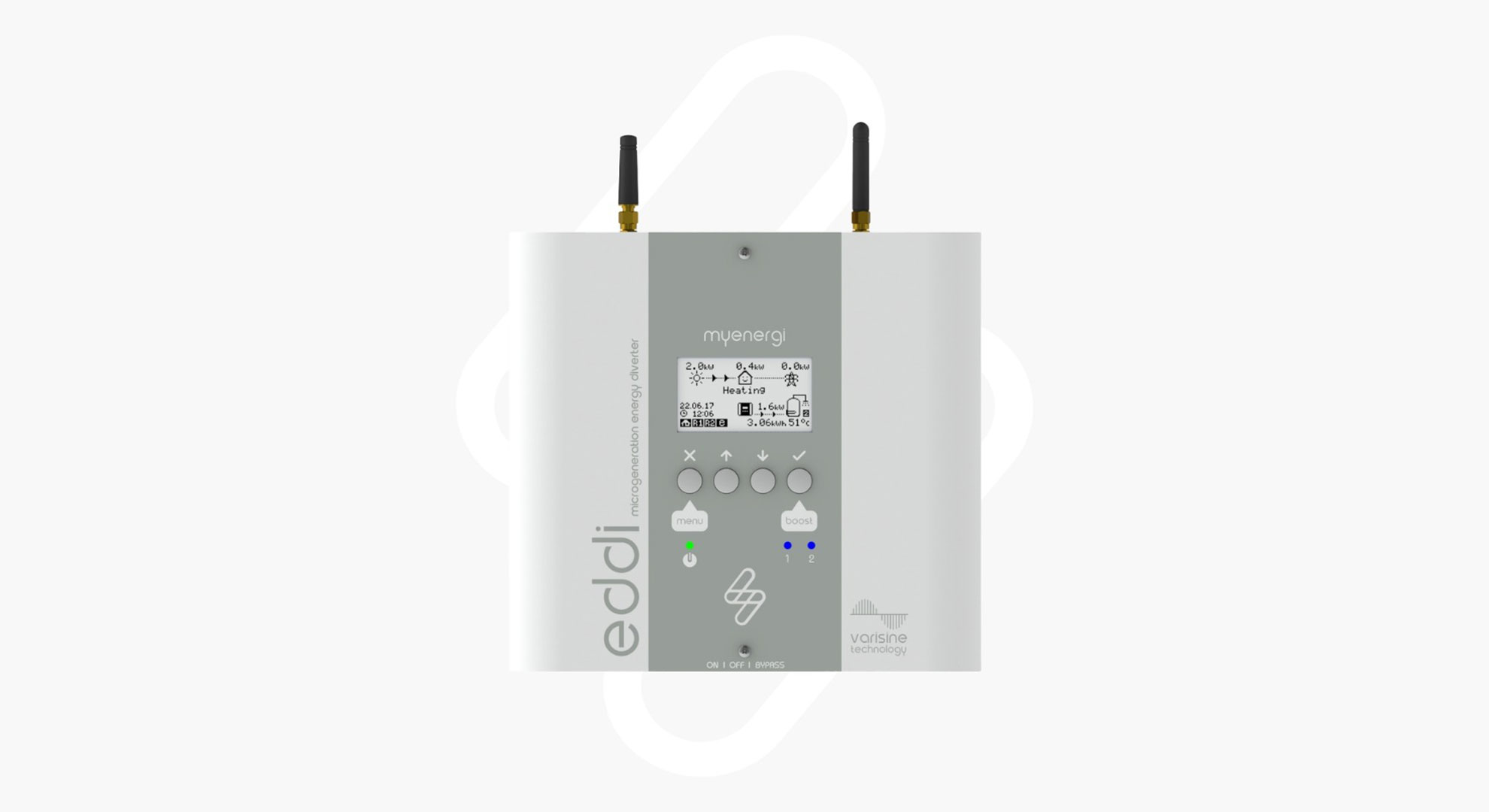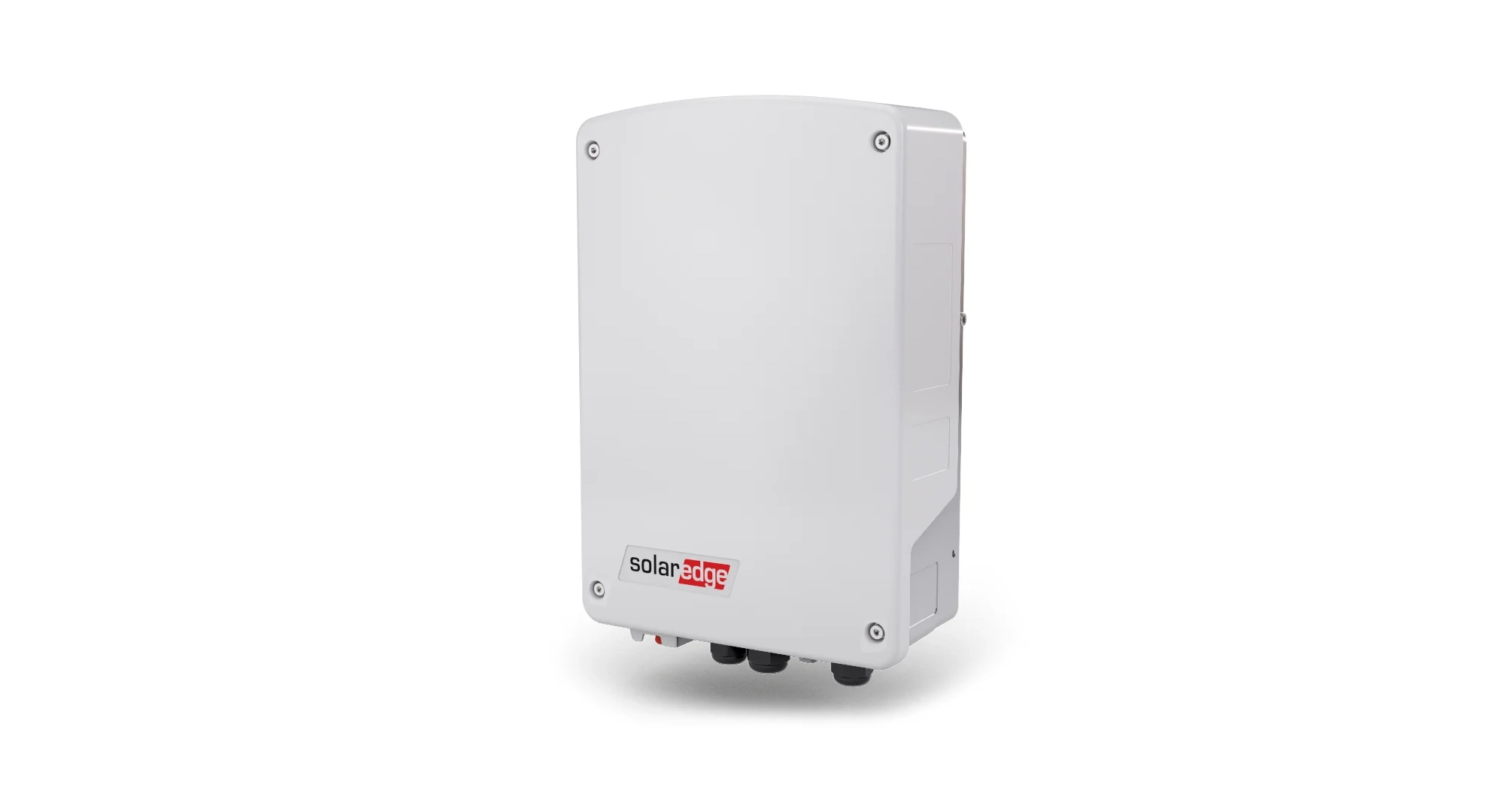Solar Power Diverters: Costs & Benefits
A solar power diverter is an ancillary device for your solar PV system designed to use excess solar energy for hot water and heating.
The power diverter uses surplus power from your solar panels to power the immersion element in a hot water cylinder.

Key Takeaways
- 1A power diverter uses excess solar energy to produce hot water.
- 2A hot water cylinder with an immersion heater is required to use a power diverter.
- 3A power diverter costs approximately €450 – €650
What is a Solar Power Diverter?
A power diverter is a smart home device designed to work with solar panels as an alternative to exporting surplus electricity to the grid.
The power diverter can take that excess power and use it for the hot water and heating needs.
Depending on the type of power diverter you have, it could be used to power any number of thermostat controlled devices.
Immersion Heating: The power diverter is used to provide energy for the immersion heater in the hot water cylinder.
Space Heating: Excess power can be sent to storage heaters, underfloor heating, or electric heating systems to keep your home warm.
How does a Power Diverter work?
The basic function of a power diverter is as follows:
- 1Two current transformer (CT) clamps are affixed to the electrical system. One at the solar inverter and another at the electrical meter.
- 2The clamps monitor solar electricity generation and usage.
- 3When surplus electricity is detected, the power diverter is activated.
- 4That surplus electricity is then sent to the immersion heater to make hot water.
Some power diverters may have additional functions that allow them to get priority for solar electricity rather than just relying on the surplus being exported.
The Cost of Getting a Solar Power Diverter
Getting a solar power diverter in Ireland will cost in the region of €450 – €640 in Ireland. This includes the cost of the unit itself and the installation costs.
Is my home suitable for a power diverter?
In order for a power diverter to be of use to your home, it requires the following criteria to be met.
You must have a source of power microgeneration for the diverter to work with. This can be solar panels or a small wind turbine.
Ideally, the power diverter is meant to work with excess power that would otherwise be exported. If you are using all of your solar electricity, then a power diverter is of limited value.
You must have suitable devices for the power diverter to work with. If you don’t have an electric immersion or other electric heating devices, then there is nothing for the diverter to send power to.
Most Popular Solar Power Diverters

Myenegi Eddi
- Usage: Hot Water & Heating
- Supply: 1-Phase & 3-Phase
- Warranty: 3-Years
- Controls: App & LCD Screen

SolarEdge Hot Water Controller
- Usage: Hot Water
- Supply: 1-Phase
- Warranty: 5-Years
- Controls: MySolar App
The Myenergi Eddi is the power diverter favoured by most solar installers in Ireland for its combination of flexibility and affordability.
Is it worth getting a power diverter?
That will depend on the size of your solar PV system, your energy usage patterns, and if there are any other power hogging devices connected to your solar PV system.
If you have a small solar PV system which is not generating much in the way of excess electricity, or if you use almost all of the electricity being generated, then it is unlikely to be worth the cost of getting one installed.
If you are with an electricity provider offering a feed-in tariff, then you should look at what you are being paid for that exported power vs what you are saving on hot water bills.
There is also the fact that a three-year warranty is standard for a power diverter. This is a shorter period of protection than with most batteries.
Alternatives to Getting a Solar Power Diverter
There are two main alternatives to a solar power diverter for your excess electricity. Installing a Solar Battery, or exporting electricity to the grid for a Feed-in Tariff.
Both of these options have advantages and disadvantages depending on your solar PV setup and energy usage.
Read more about in our guides on Selling Excess Solar Power & Solar Battery Storage.
Selling Excess Solar
- No upfront investment cost
- Tax Free Earnings up to €400
- No maintenance requirements
Worth less than self-consumption
Price set by electricity supplier
Solar Battery Storage
- Flexible electricity usage
- Maximises self-consumption
- Protects from power outages
Substantial investment cost
May require replacement
Frequently Asked Questions
Yes. A power diverter can easily be retrofitted onto an existing home solar pv system.
Yes. Having a power diverter installed does not affect the existing immersion controls.
Yes. You can install a solar power diverter yourself. However, if you are not familiar with electrical wiring we recommend using a qualified electrician.
Solar immersion diverters typically have a lifespan of approximately 10 years. But this can vary based on the level of upkeep.
A diverter should be installed in a location close to both the solar inverter and your electricity meter if possible. Power diverters should not be installed outdoors.
Get Free Solar Quotes Today
Find a local recommended solar panel installer in your area, and get your free quote today. It’s 100% cost and commitment free.


